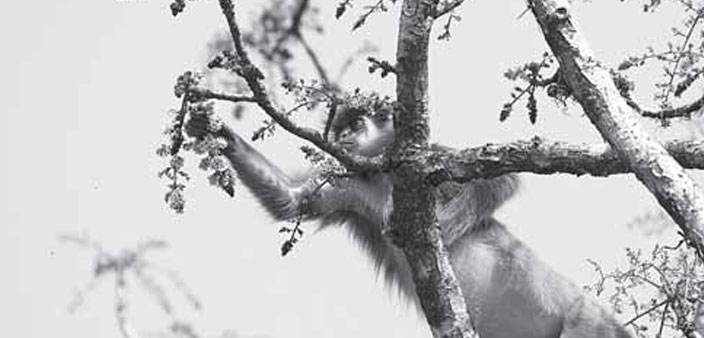In May 1996, I walked across a burnt bridge and saw the mayhem that had been unleashed on Manas. I spoke with forest guards who had lost friends and inspected guard huts that had been razed to the ground. There were no more rhinos left in Manas, I was told. Yet, the forest itself seemed to burst with good health. Golden grasslands stretched into the distance, capped langurs sprang from tree to tree, and though I did not see them, I knew that those of Manas’ 21 endangered species that were not on the direct hit-list of poachers and militants – including golden langurs, clouded leopards, golden cats and even Gangetic dolphins – were alive and well.
But there were no more rhinos. For 10 long years, the park had been in the grip of militancy and we were among the first ‘outsiders’ to return to paradise.
Manas’s original protector
How I wished Deb Roy was alive. Almost single-handedly in the 1970s and ’80s, he had managed to fight off poachers and encroachers to keep Manas in one piece. He was the first Field Director of the Manas Tiger Reserve, one of only nine forests that had been selected to be a part of Project Tiger when it was launched in 1973. Within a few years, his team made sure that rhino numbers rose to over 100 and that tigers were able to breed and bring up their cubs successfully throughout the park. Almost anyone who visited Manas in the early 1980s returned with images of large elephant herds in the forests and grasslands, a stone’s throw from the Mothangudi rest house on the banks of the Manas River.
While Deb Roy was alive, his staff was kept free from the interference of politicians and bureaucrats because very few people were prepared to tangle with the straight-talking, extremely popular wildlife defender who knew that protecting the forests was the only way the tigers, rhinos and elephants could be protected from humans.
I have been visiting Manas on and off for a decade now. Against the backdrop of the Eastern Himalaya, this grass and jungle habitat of unparalleled beauty sprawls like a natural womb within whose protective cocoon, golden langurs and Bengal floricans, hispid hare and pygmy hogs survive.
Manas River – the lifeline
As with all tiger reserves, the forest serves as a sponge for the monsoon rain and subsequently feeds rivers that originate in the Eastern Himalaya. Part of the foothills of the outer Himalaya, Manas is a low-lying, linear wilderness that stretches between the Sankosh River to the west and the Dhansiri River in the east. The Manas River itself waters the western part of the sanctuary, forks into the Boki and Hakua rivers in the heart of the reserve, and joins the mighty Brahmaputra, 64 km to the south.
This silver-blue river, with its smooth-pebbled, sand and shingle banks, is the life blood of the forest. There is no better way to experience the river’s changing moods than to sit soundlessly for hours on its bank and let nature come to you. The Manas forest extends on both sides of the river and presents one of Earth’s most timeless vistas. As you watch the magic unfold, a herd of elephants might silently appear on the opposite bank, lending a touch of the ethereal to an earthly paradise. Little wonder then, that this was chosen by UNESCO to be a World Heritage Site.
A slow return to normalcy
But Manas has had a rough past. And its future is still far from secure. The idyllic splendour of the tiger reserve, which represents the entire biotope, was shattered by Bodo militants who used the thick forests as a hiding place and casually took a vicious toll on its wildlife, which was traded for cash and arms. Human lives were also lost, those of forest guards in particular.
Though a tentative peace now prevails, the park itself has never quite recovered from the aftermath of the insurgency. Poachers and timber smugglers continue to wreak havoc here, as they do across virtually every wildlife park in India.
Home to wild buffalo, elephant, tiger (and perhaps a handful of rhinos on its fringes), Manas today harbours more endangered species than any other forest in India, a fact confirmed by the Red Data Book maintained by the International Union for the Conservation of Nature (IUCN). Fortunately, Manas’ forests are extensive, covering 2,840 sq. km. with a core area of 391 sq. km. Across the river, the Bhutanese government has also established the 565 sq. km. Royal Manas Reserve, which abuts India’s Manas Tiger Reserve. The goddess Manasa, who gave the Manas National Park its name, would probably be pleased at the park’s slow climb back to health. So would the people of the Mushahari or tiger clan, part and parcel of the Bodo community, who believe that they have descended from tigers. Even today, clan members who witness the death of a tiger go through a period of mourning for a week, much as they would for a parent or child. Tragically, this did little to stop the militants.
In the days ahead, however, it is the sentiments of the Mushahari that we will need, to bring the tiger and Manas itself back from the brink.


